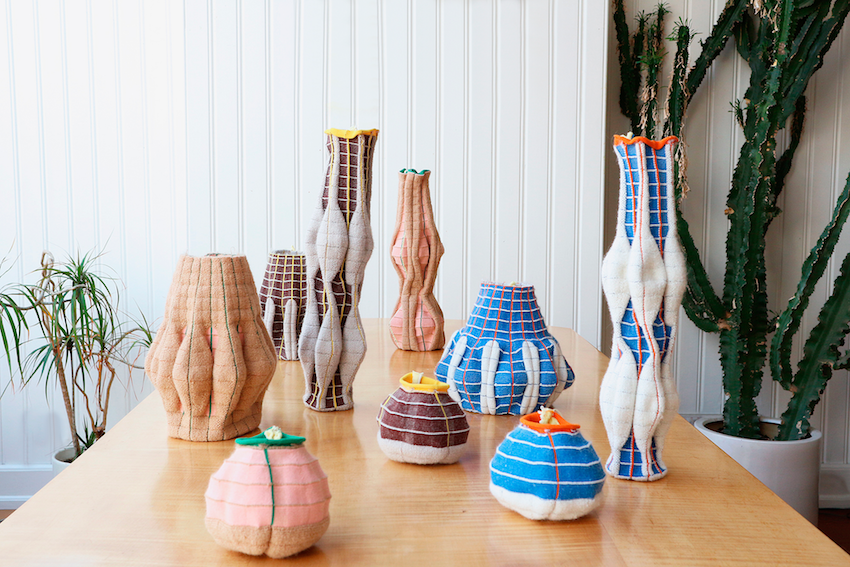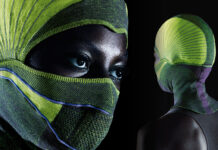“I believe that we don’t need many things, but rather right things. My scope of sustainability comes from creating lasting pieces that are not stuck in one shape or size. I want ‘Soft vessel’ to create a meaningful and personal ownership with its adaptability. Materiality doesn’t provide a sense of belonging, but it’s healthy to own objects that help people feel grounded.” Sne Tak, on her sustainability.
London based designer Sne Tak recently graduated her MA in Textiles at the Royal College of Art. Describing herself as a knit designer and storyteller, Sne’s interest in both narrative and aesthetic communication is clear within her nine-object series. These soft, adaptable and multifaceted knitted vessels designed for functional interior use are self-reliant, contractible, expandable and strong.

Sne’s technical understanding of knitwear and instincts for colour were developed during her time studying her BFA in Textiles at the Rhode Island School of Design, and through industry experience in New York. Her MA at the RCA was therefore an opportunity to begin storytelling within her work,
“My goal in starting my MA was to amalgamate my technical knowledge and the storytelling in my pieces, and the ‘Soft Vessel’ series was born. The quality I want to capture is hybridity of dichotomy: Asian and Western cultures, soft and hard, technical and narrative, and high-technology yet organic handmade aesthetic.”
Sne’s Personal Narrative and The Influence It Had on The Origins Of ‘Soft Vessel’
A sense of home, belonging, and a personal fascination with adaptability are embedded in Sne’s sense of being. In the 1950’s, Sne’s grandmother fled with her four children from North Korea during the Korean War. Sne’s life experience reflects this nomadic journey as she has moved every couple of years, living in South Korea, Australia, across the US and in Europe.
“I have lived most of my life in metropolis, and I love the vibrancy of cities and the energy from its inhabitants. I also make sure to secure quiet moments with nature, and that’s why London is my favourite city with great parks.”

The origins of ‘Soft Vessel’ began in Sne’s heritage and personal experiences of frequent relocation. Embracing new cultures in each place she went, she cultivated what she describes as a ‘hybrid identity’. Conventional home objects often became the most significant burden of her traveling lifestyle, due to their fragility and inflexibly. In this problem lay Sne’s opportunity to design a solution.
The familiar, tactile qualities of textiles and the history that can embed within them were appealing to Sne as she began to wonder what materials would best suit her portable knitted structures. The type of strength and structure she needed however, was only something she had seen within design applications for textiles coverings or softening agents for furniture. The textiles, she noted, is always incomplete without hard components. She posed herself the question,
“What is an incarnation of natural strength and ability of knitted textiles?”

Self-reliance of her knitted textiles therefore became Sne’s challenge, so she endeavoured to engineer three dimensional forms which could achieve the following ten attributes:
-Collapsibility -Customisability -Expandability -Flexibility -Portability -Reversibility -Shatter-proof -Stackability -Washability -Water-repellency
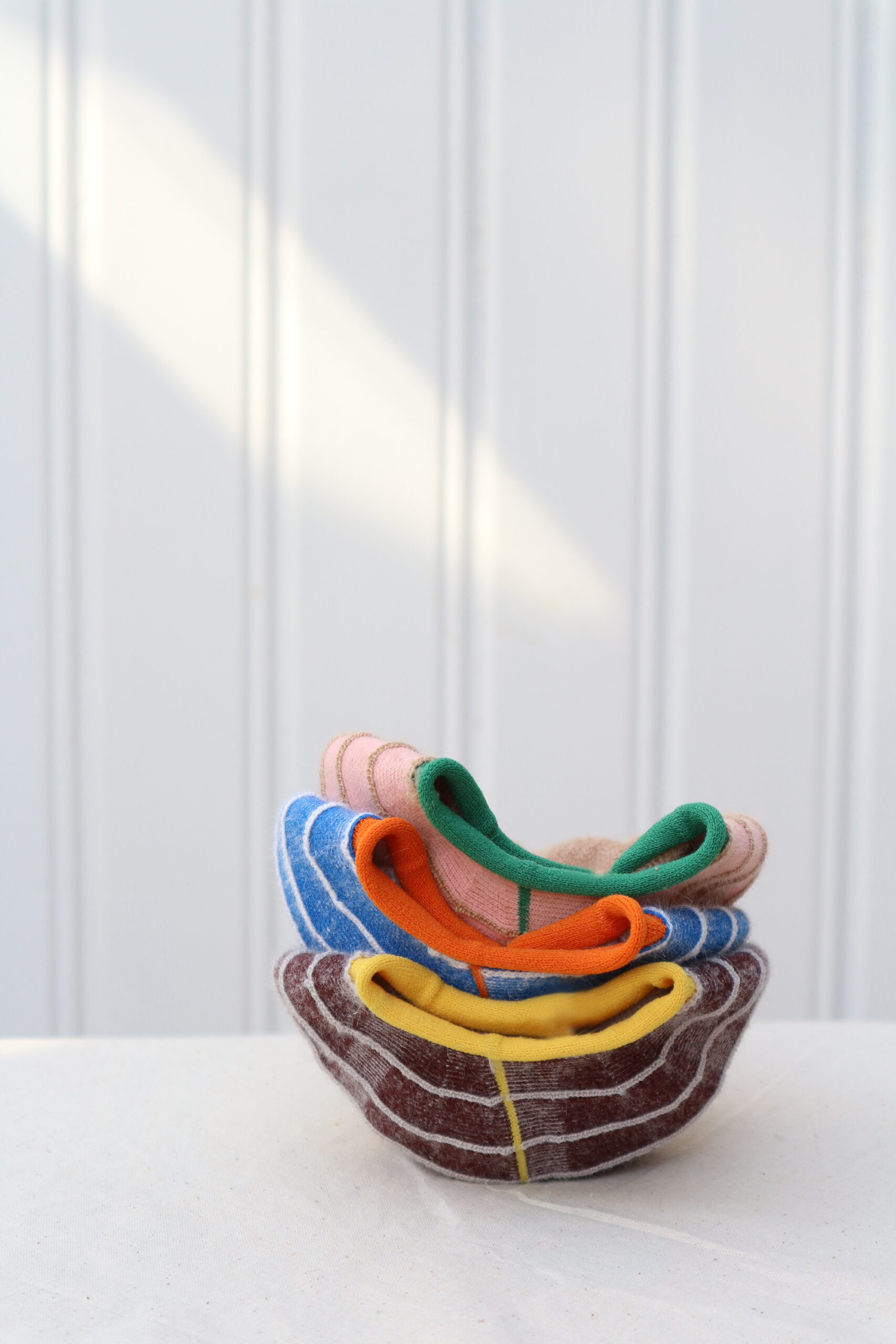
Material Palette and Sculptural Inspiration
Blends of wool, mohair, propylene and elastomeric yarns combined to form this first ‘Soft Vessel’ series, a blend that achieved strength and adaptability. Unable to find sustainable yet functional alternatives to the petrochemical based yarns in her work, Sne, like many innovators, urges the development of sustainable elastics from spinners.
The silhouette of each piece in the series formed both organically and with intention.
“I went back to my heritage. My grandmother and her children didn’t have many things to begin with, and they were in rush to escape for freedom and safety. They couldn’t take everything, and they used fabric to wrap valuables into bundles to carry with them. These bundles were primitive soft modular multifunctional items for storage, comfort, and safety.”
To avoid the forms becoming too over familiar, Sne intervened in this natural shaping and introduced sculpting inspired by basketry, ceramic and modular design.
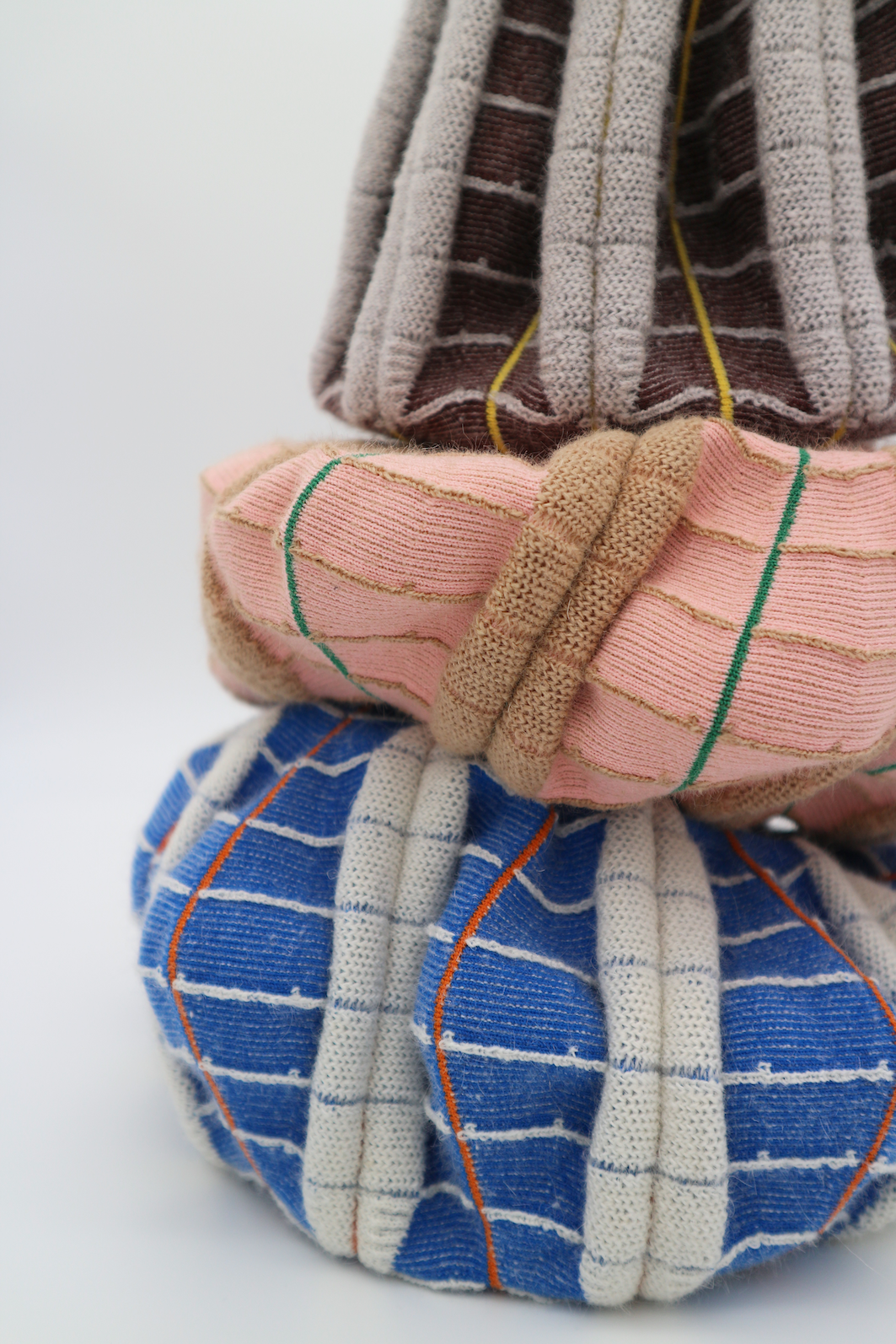
To realise her knitted forms in 3D Sne first sketched her ideas freely on paper and ran shape studies of multiple objects. Museum visits fed her inspiration from archaeological shapes and historic storage practices within lived environments across centuries past. Connecting the dots in her head, Sne went on to develop conceptual swatches on fine gauge Dubied machines whilst paper modelling final shapes for knitting on Shima Seiki and Stoll machines. During the development of her textiles alongside the structure and function, challenges arose as she devoted herself to testing, revising and reforming her methods until the results met her vision.
“I chose the fine gauge inlay-technique on the automated knitting machine with organic shapes to stress the mixture of high technology and handmade aesthetic. Also, the fine gauge in three layered fabric in wool enhanced the water-repellency surface.”
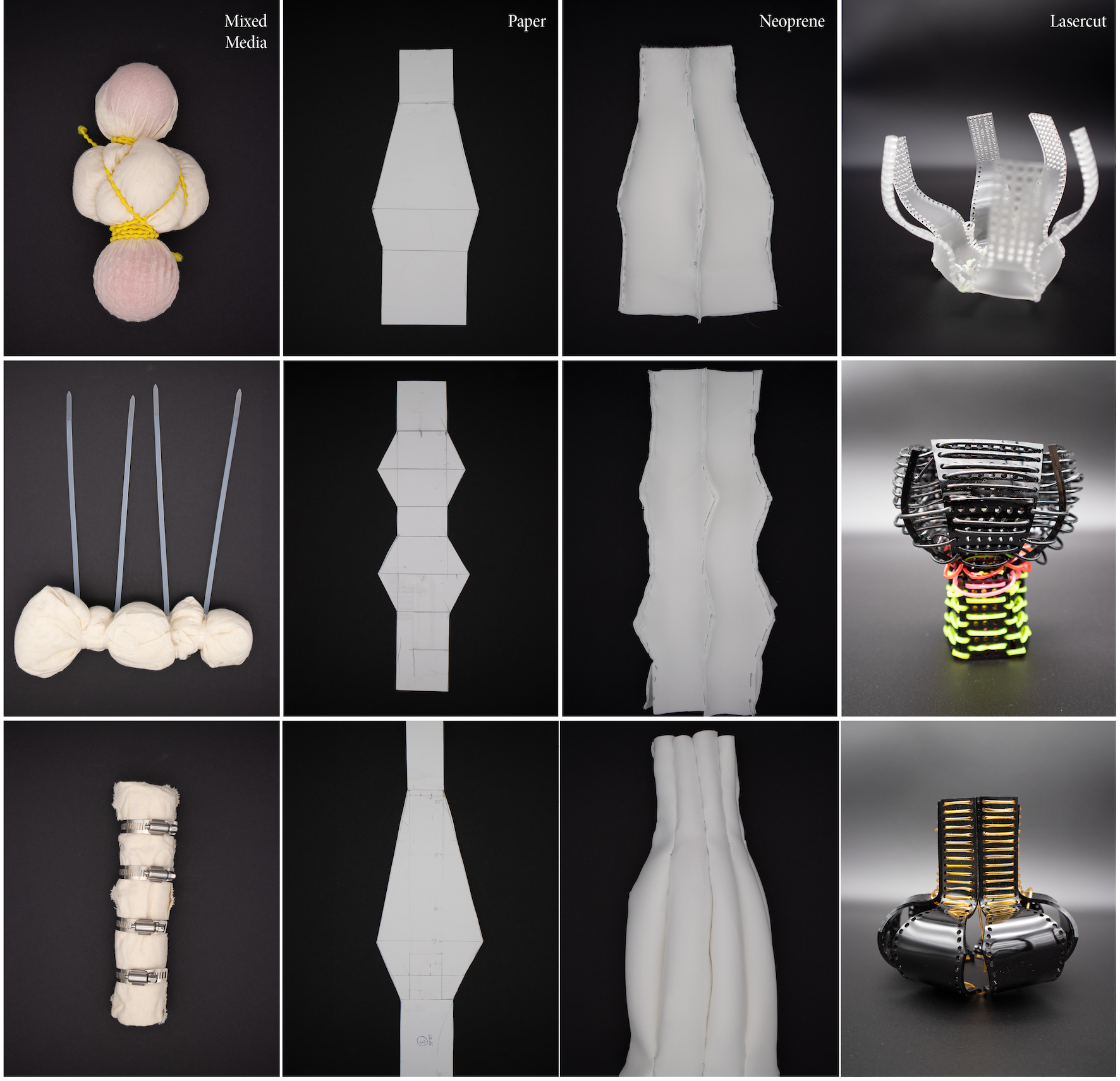
Adapting During The Pandemic
The pandemic brought a halt to Sne’s physical knitting. She utilised the time working from home by focusing on her storytelling for the series, whilst experimenting with sustainable bio plastic creation. Having now created a library of bio plastics from various food waste sources, Sne has a vast hand made reference for colour, texture and surface development in this discipline. Application within ‘Soft Vessel’ as decorative trims and labels is something she is exploring.
Currently developing the next series for ‘Soft Vessel’, Sne is trialing new yarn and shape avenues including low impact plant sourced PLA, Chai seed yarn, recycled textile waste and dead stock yarns. Whilst researching the latest textile scientific journals, she discovered evidence of wool’s self-cleaning and hyper-waterproof potential, something she plans to explore in future works.
Looking To The Future
Open to working within the knitting industry for interiors as well as other design disciplines, Sne shared her ambitions,
“I aspire in my future steps to become as flexible and expandable as ‘Soft Vessel’. Alice Rawsthorn said design is one of the most powerful forces in our lives, whether or not we are aware of it, and can also be inspiring, empowering and enlightening. I hope my ‘Soft Vessel’ and future work evokes curiosity and inspires viewers.”
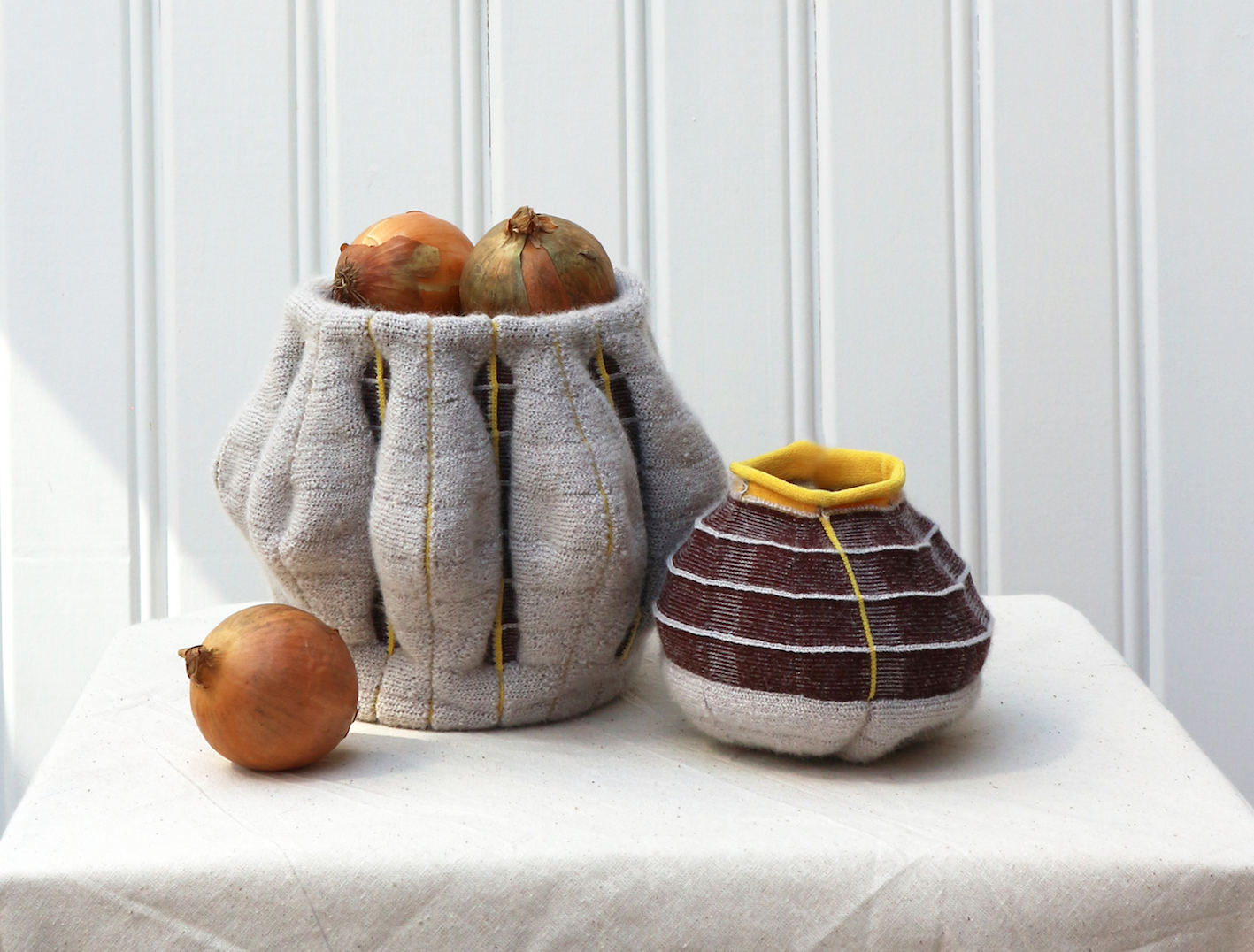
Sne’s knitted series of objects display her intriguing, highly skilled approach to knitted textile design, and embed her personal narrative with a refined attention to detail in both texture and form. To see the next series ‘Soft Vessel’ has to offer with be a true delight, certainly inspiring even more of the curiosity which Sne aims for.

Subscribe To Our Newsletter
Join our mailing list to receive the latest news and updates from our team.


